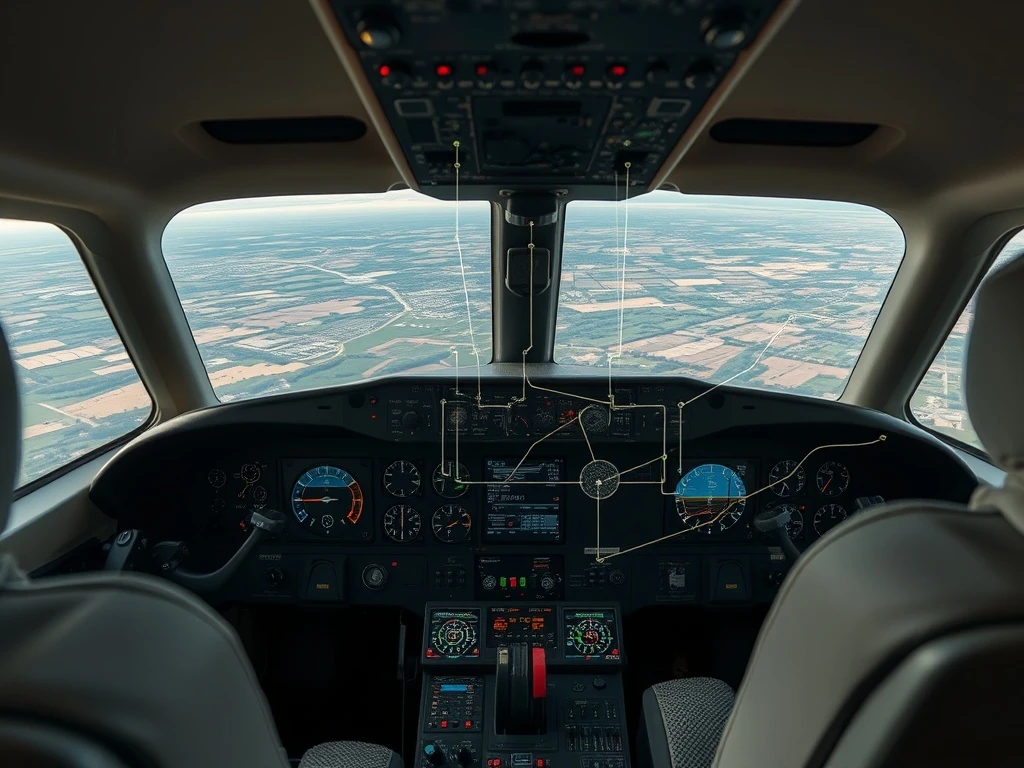In modern aviation, seamless communication is vital. Data flows constantly from sensors across the airframe to instruments in the cockpit. This critical information alerts pilots to potential dangers. Choosing the right avionics data bus is therefore paramount. It forms the backbone of an aircraft’s communication system. This decision involves many factors. Environmental limitations, bandwidth demands, and system compatibility are key. Future-proofing capabilities also require careful consideration. This article explores the essential criteria for selecting an optimal avionics data bus for your suite.
Data Rate and Bandwidth Considerations for Your Avionics Data Bus
The first crucial factor is the avionics data bus’s bandwidth and data rate. Modern aircraft generate immense amounts of live data. More sensors and systems now connect than ever before. Therefore, the chosen avionics data bus must support this high data volume. It must do so without bottlenecks or latency. These issues can severely undermine system performance. High-bandwidth buses are especially relevant for complex data. For instance, video streams, radar data, and diagnostic information often flow simultaneously. Such systems demand robust data handling capabilities. Ensure the bus can meet current and anticipated data loads. Consider the peak data traffic during critical flight phases. This ensures smooth and uninterrupted operation.
Reliability and Fault Tolerance in Avionics Data Bus Systems
Reliability is a deal-breaker in aviation. The avionics data bus acts like the central nervous system of the aircraft. Any failure in data transmission can have grave effects. Consequently, assessing fault tolerance and redundancy properties is essential. Various data bus architectures offer different solutions. Some buses include built-in mechanisms for error detection. They provide automatic corrections, preventing data loss. This protects against electrical interference or computer component problems. Redundancy features, like dual or parallel bus configurations, further enhance system resilience. Data can take an alternate path if the main bus fails. This ensures continuous operation, even under adverse conditions. Ultimately, robust fault tolerance is non-negotiable for flight safety.
Compatibility with Legacy Systems and Your Avionics Data Bus
Compatibility with existing aircraft systems is another significant consideration. Many operational aircraft today feature a mix of legacy and contemporary avionics devices. This combination often poses possible compatibility issues. Replacing old components entirely can be impractical or too expensive. Therefore, the new avionics data bus must interface successfully with legacy systems. This involves a keen evaluation of signal formats, voltages, and communication protocols. Smooth interaction is crucial to avoid data loss or misinterpretation. Compatibility does more than just reduce tie-up costs. It also minimizes disruption during upgrades or transitions. This is particularly vital for retrofits and maintenance. Proper integration ensures a seamless upgrade path.
Environmental and Physical Constraints of an Avionics Data Bus
Avionics systems operate in very hostile environments. They face extreme temperatures, intense vibration, moisture, and electromagnetic interference. Thus, the physical and environmental resilience of the avionics data bus cannot be disregarded. Data bus cabling, connectors, and hardware must be ruggedized. They need to perform well in these rough conditions without performance alteration. Weight and space factors are also serious considerations. In smaller aircraft, every gram matters significantly. Choosing an avionics data bus with a small physical size and thin construction helps optimize the avionics suite’s design. This ensures all harsh environment requirements are satisfied. Furthermore, consider materials resistant to corrosion and fatigue for long-term durability.
Standards and Certification Requirements for an Avionics Data Bus
Adherence to industry standards and certification requirements is a core criterion. Aviation is one of the most heavily regulated sectors globally. Its data buses must meet stringent directives. This guarantees safety and interoperability. Standards like MIL-STD-1553 define the bus’s electrical and timing characteristics. They also specify its behavior under fault conditions. Crucially, they support mission-critical applications. Implementing a MIL-STD-1553-compliant solution, such as those offered by Sital Technology, ensures quality. It provides the compatibility needed to integrate seamlessly with other certified avionics components. By choosing a standard-compliant bus, you simplify the certification process. This gives stakeholders confidence. The system will satisfy both domestic and international aviation regulations. Other important standards include ARINC 429 and ARINC 664 (AFDX), each serving specific needs.
Scalability and Future-Proofing Your Avionics Data Bus
Modern aircraft designs evolve rapidly. Therefore, the chosen avionics data bus must offer scalability. It needs to accommodate future growth and technological advancements. Consider how easily you can add new sensors or systems. Can the bus handle increased data traffic without a complete overhaul? A scalable bus architecture reduces long-term costs. It also minimizes downtime for upgrades. Look for systems that support modular expansion. This allows for flexible modifications. Future-proofing also involves considering emerging technologies. Will the bus support higher data rates or new communication protocols? Investing in a forward-compatible solution is a wise strategic decision. It ensures your avionics suite remains relevant and efficient for years to come.
Choosing the appropriate avionics data bus for an avionics suite is a difficult choice. It requires thorough consideration of many issues. These include performance, reliability, environmental tolerance, and regulatory suitability. The selected bus is the core part of communication. It connects sensors, processors, and the cockpit. Without it, safe and efficient flight is impossible. An awareness of trade-offs between bandwidth, fault tolerance, compatibility, scalability, and physical constraints will lead to a mature choice. This careful decision builds a future-ready avionics system.
Frequently Asked Questions (FAQs)
What is an avionics data bus?
An avionics data bus is a digital communication network within an aircraft. It facilitates the exchange of data between various electronic systems, sensors, and instruments. This includes everything from engine sensors to flight controls and cockpit displays.
Why is choosing the right avionics data bus critical?
The right avionics data bus ensures efficient, reliable, and safe communication. It prevents data bottlenecks, reduces latency, and supports critical flight operations. A poor choice can compromise performance and safety.
What are the key factors when selecting an avionics data bus?
Key factors include data rate and bandwidth requirements, reliability and fault tolerance features, compatibility with legacy systems, environmental and physical constraints, adherence to industry standards, and scalability for future growth.
What common standards apply to avionics data buses?
Common standards include MIL-STD-1553 (for military applications, known for robustness), ARINC 429 (a widely used commercial standard), and ARINC 664 (AFDX, for high-speed Ethernet-based communication). Adherence to these ensures interoperability and certification.
How does an avionics data bus contribute to flight safety?
A robust avionics data bus ensures that critical flight data, warnings, and control signals are transmitted accurately and without interruption. Features like redundancy and error correction prevent system failures, directly enhancing overall flight safety.








